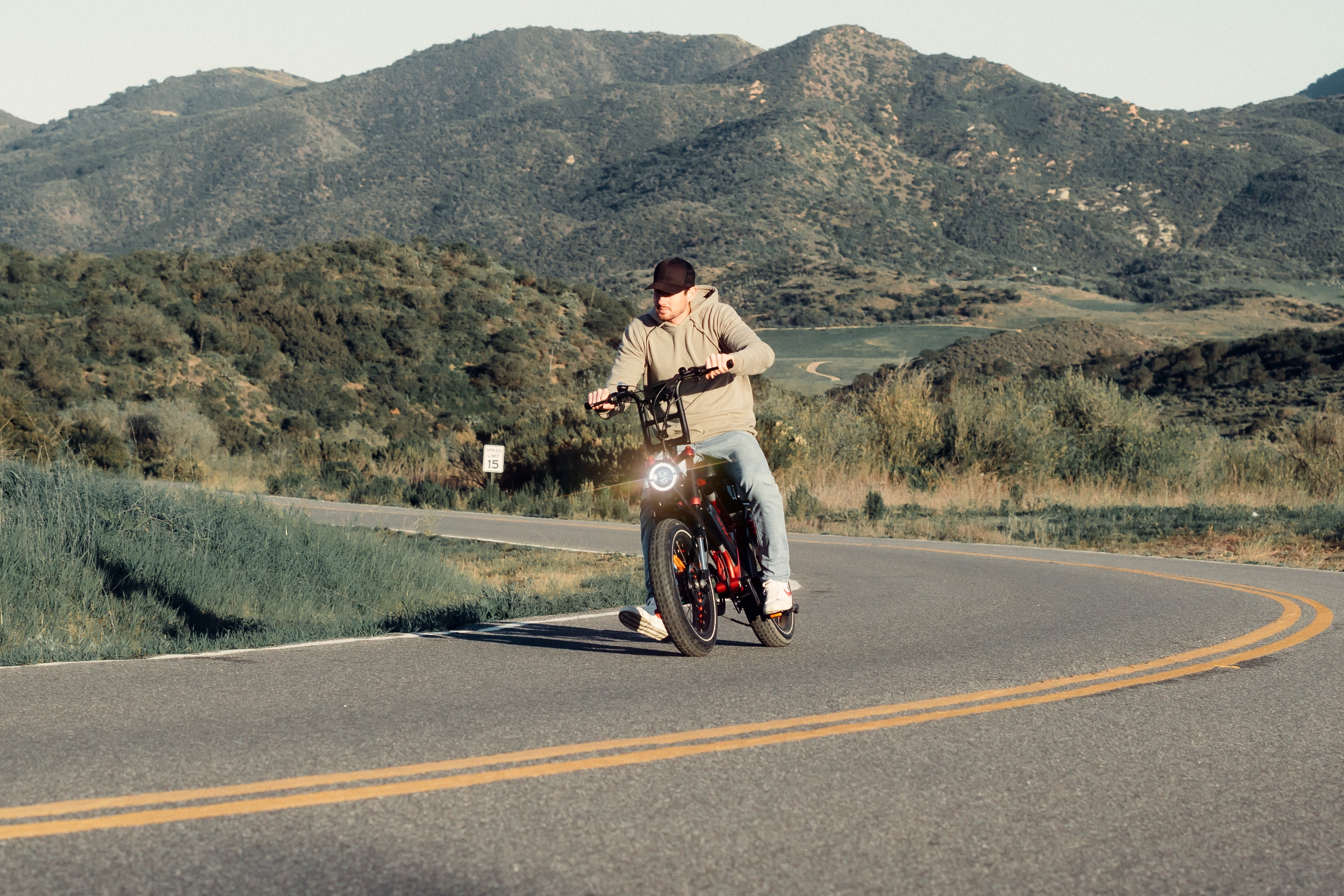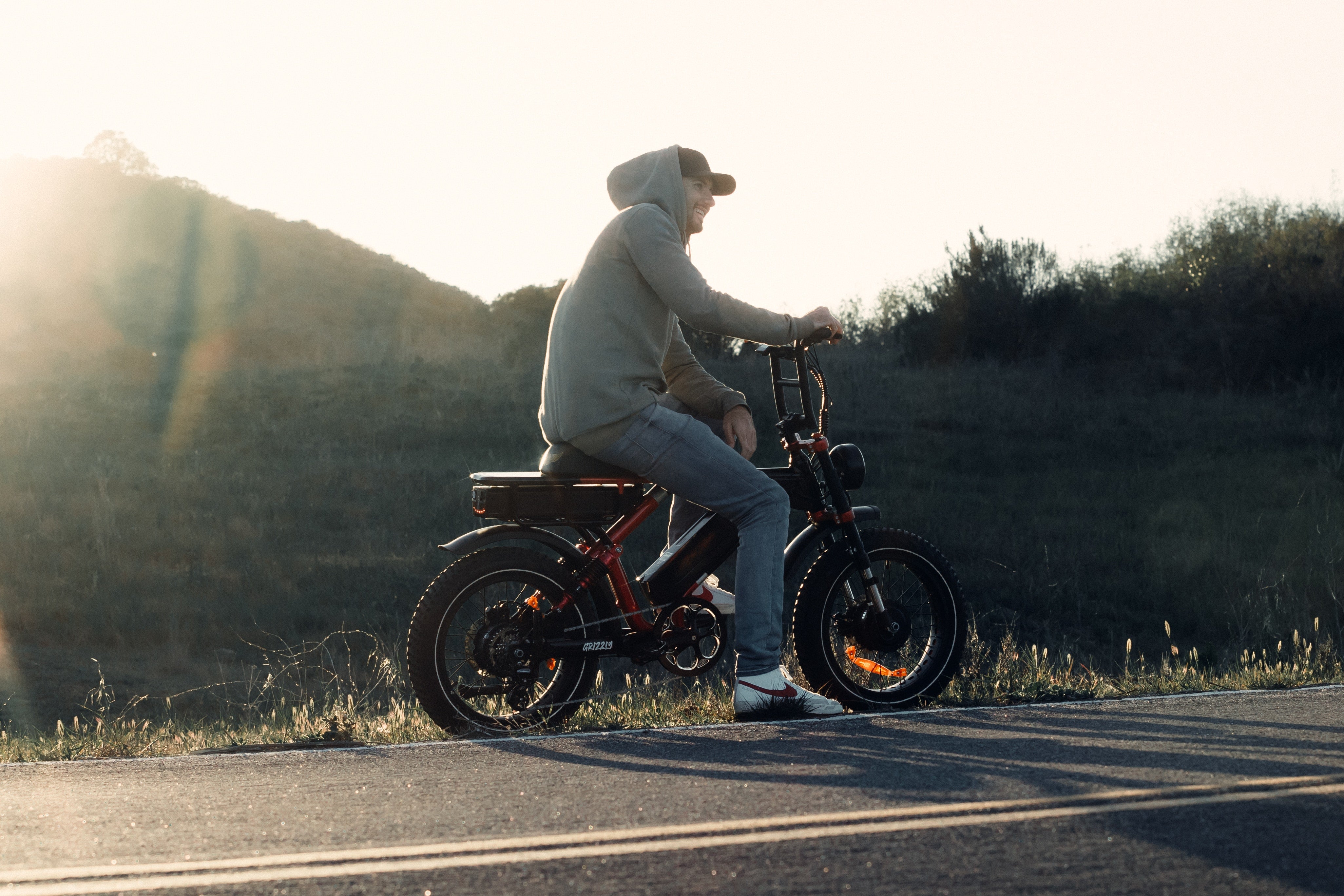Ebikes have become increasingly popular in recent years, transforming how we travel and altering the transportation landscape. As ebikes become a common sight on our roads, it's essential to find the best lane to ensure their safe integration into our existing transportation infrastructure.
Ebikes, or electric bicycles, come with an electric motor to assist with pedaling. They offer numerous benefits, such as extended range, reduced physical effort, and the ability to tackle challenging terrains. As a result, ebikes have gained the attention of commuters, leisure riders, and individuals seeking eco-friendly transportation options.
However, as the number of ebikes increases, it becomes crucial to determine where they fit in terms of lanes and road infrastructure. The current road system is primarily designed for regular bicycles and motor vehicles, and it needs to adapt to accommodate the unique characteristics and needs of ebikes.
Finding the ideal lane for ebikes ensures their safe coexistence with other road users and maximizes their potential benefits. It considers speed differences, safety concerns, rider comfort, and efficient traffic flow. By understanding the specific requirements of ebikes and determining the most suitable lane allocation, we can create a transportation infrastructure that encourages ebike usage and fosters a harmonious and sustainable transportation system.
Through this exploration, we aim to gain valuable insights into the ideal lane for ebikes and work towards creating a safer and more inclusive road environment for everyone. Let's embark on this journey of unraveling the ebike lane dilemma and shaping the future of transportation together.
Understanding Ebikes
If you need to get more familiar with ebikes, don't worry! We're here to give you a quick and easy overview.
Ebikes, short for electric bikes, are like regular bicycles but with a twist. They come equipped with a small electric motor that provides an extra boost when you pedal. This means you can go faster and cover more ground with less effort. It's like having your own little superhero sidekick on two wheels!
One of the great things about ebikes is their versatility. They come in various styles, from sleek and sporty models to practical and comfortable ones for everyday commuting. Ebikes are not just for fitness enthusiasts; they cater to many people, including those with physical limitations or who want a more enjoyable riding experience.
Their unique characteristics set ebikes apart from traditional bicycles and motor vehicles. Unlike regular bikes, ebikes provide an electric assist that makes pedaling easier, especially when tackling hilly terrain or battling solid headwinds. You can choose the level of assistance, so you're always in control. It's like having a secret power boost whenever you need it.
On the other hand, ebikes differ from motor vehicles as they don't require gasoline or emit harmful pollutants. They have lower top speeds and are typically designed for urban or suburban travel rather than high-speed highways. Ebikes allow you to enjoy the fresh air, exercise, and experience the world around you in a way that motor vehicles can't replicate.

So, whether you're a fitness enthusiast, a daily commuter, or an adventure seeker, ebikes offer a fun and efficient way to navigate our bustling streets. With their unique blend of pedal power and electric assistance, they're becoming an increasingly popular choice for transportation.
Now that we understand ebikes let's dive deeper into ebike lanes and discover the ideal road space for these remarkable vehicles.
Analyzing Existing Road Infrastructure
Now that we grasp ebikes, it's time to look closer at our current road infrastructure and how it accommodates these innovative vehicles. From busy city streets to peaceful rural roads, we'll explore the existing landscape and evaluate its suitability for ebikes.
We often find designated bike lanes in urban areas, where traffic can be dense and fast-paced. These lanes provide a safe space for cyclists to ride, separated from motor vehicles. However, assessing whether these bike lanes are wide enough to accommodate the slightly larger size and potentially higher speeds of ebikes is essential. Are they designed to handle the increased demand from traditional cyclists and ebike riders?
Moving to suburban areas, we often encounter shared lanes. These are road spaces where cyclists and motorists share the same route. Shared lanes require cooperation and respect from both parties to ensure everyone's safety. However, shared streets may pose challenges for ebikes, as their higher speeds and varying acceleration may create conflicts with slower-moving bicycles. It's crucial to consider whether shared lanes can effectively cater to the diverse range of speeds and capabilities of ebikes.
In rural areas, where roads may be less congested, the existing infrastructure might be more accommodating for ebikes. However, we must still examine whether rural roads provide sufficient space for ebikes to ride comfortably and safely alongside motor vehicles. Additionally, assessing if there are appropriate connections between rural highways and urban/suburban areas is essential, allowing ebike riders to travel seamlessly across different regions.
To know the ideal lane for ebikes, we must thoroughly evaluate the suitability of existing bike lanes, shared lanes, and other road spaces. This analysis will help us understand the strengths and limitations of our current infrastructure in meeting the needs of ebike riders. It will guide us in identifying areas for improvement and finding innovative solutions to ensure the safe and efficient integration of ebikes into our transportation system.
Next, we'll delve deeper into the considerations that must be considered when determining the ideal lane for ebikes. Join us as we explore the factors that are crucial in creating a harmonious road environment for all users.
Considerations for Ebike Lane Placement
Determining the ideal lane for ebikes involves careful consideration of various factors. Let's explore these considerations together to ensure the safe and efficient integration of ebikes into our transportation system.
- Speed Differentials: Ebikes have higher speeds than traditional bicycles. It's crucial to account for these speed differences when designing ebike lanes, allowing for smooth interactions with other road users.
- Safety Concerns: Safety is paramount. Identifying potential hazards, such as intersections and conflicts with pedestrians or vehicles, is essential. Clear signage and road markings can enhance safety.
- Rider Comfort: A comfortable riding experience encourages ebike usage. Designing lanes with smooth surfaces, sufficient space, and minimal obstructions enhances rider comfort and promotes a positive cycling culture.
- Adequate Space: Ebikes require enough space to maneuver safely. Wide lanes or dedicated paths can reduce conflicts and congestion and enhance traffic flow.

Innovative Solutions
When finding the ideal lane for e-bikes, we can't just rely on our intuition. We need to look for innovative solutions that will pave the way for a harmonious and safe coexistence on our roads—and in this article, you'll see some forward-thinking ideas that have already revolutionized e-bike lane placement, taking into account crucial factors such as infrastructure modifications and signage.
- Infrastructure modifications: It plays a vital role in effectively accommodating e-bikes. One innovative solution involves creating dedicated e-bike lanes that cater to the unique needs of e-bike riders, providing sufficient space and safety features. By separating e-bike lanes from the traditional bike and motor vehicle lanes, conflicts will reduce, and improve overall traffic flow.
- Signage and Visual Cues: Guiding e-bike riders and other road users requires clear and intuitive signage. Innovative solutions involve developing specific signage and visual cues that designate e-bike lanes and provide relevant information. It ensures that all road users know the presence of e-bikes and can navigate the roads safely and efficiently.
- Mixed-Use Lanes: Implementing mixed-use lanes is another innovative solution. These lanes allow e-bikes, bicycles, and other slow-moving modes of transport to coexist. They are designed to accommodate a variety of non-motorized vehicles, fostering collaboration and mutual respect between different road users. Strategic lane markings and clear guidelines regulate traffic flow and create a smooth and organized environment.
- Alternative Lane Configurations: Exploring alternative lane configurations considers the diverse needs of e-bike riders. It includes flexible lane designs that adapt to different times of the day or specific usage patterns. For example, particular lanes could be designated as e-bike lanes during peak commuting hours to facilitate smoother traffic flow. Shared lanes could also be established, allowing e-bike riders to safely integrate with other vehicles while maintaining a reasonable speed differential.
- Education Campaigns: Educating e-bike riders and other road users is crucial for fostering understanding and respect. Innovative solutions involve targeted education campaigns that raise awareness about the rules and etiquette of sharing the road with e-bikes. Public service announcements, online resources, and interactive workshops are examples of adequate tools for promoting safe and responsible e-bike riding practices.
By embracing these innovative solutions for e-bike lane placement, we create a road environment that accommodates the unique needs of e-bike riders while ensuring the safety and convenience of all road users. These forward-thinking approaches have the potential to transform our transportation infrastructure, making it more inclusive, efficient, and sustainable. With continued collaboration and open-mindedness, we shape a future where e-bikes seamlessly integrate into our road networks, enhancing mobility options and nurturing a greener and healthier society.

Conclusion
Finding the ideal lane for e-bikes is crucial for safety, sustainability, and a harmonious transportation network. Designated spaces reduce accidents and conflicts, ensuring the security of riders, pedestrians, and other road users. Appropriate lane placement promotes e-bikes as an eco-friendly and efficient mode of transport, reducing emissions and congestion. Well-designed e-bike lanes create a cohesive infrastructure, allowing riders to travel safely while accommodating other vehicles and pedestrians. Let's prioritize thoughtful lane solutions like dedicated e-bike lanes and mixed-use configurations to unlock the full potential of e-bikes, enhancing safety and contributing to a greener future.

Comments (0)
Back to Recent Posts